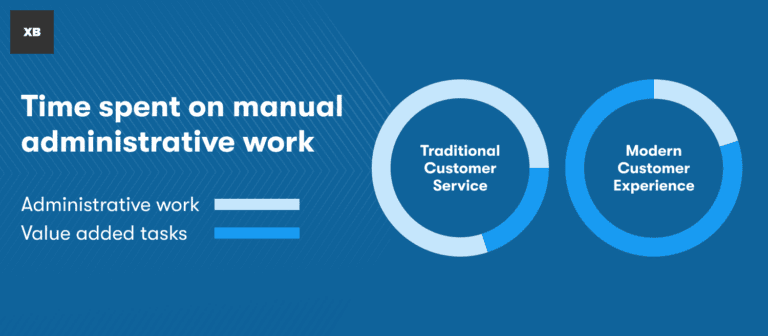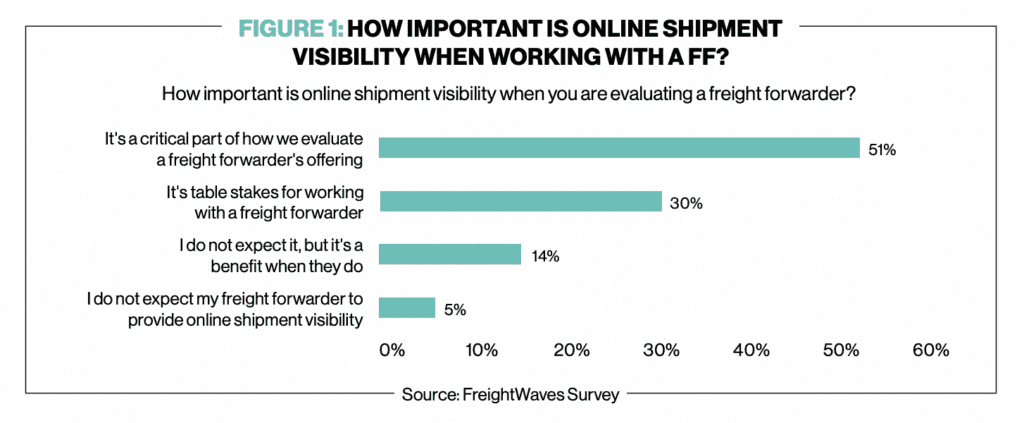With customers at the center of freight forwarding, many companies are seeking out ways to make their business more user-centric. However, as much of the industry undergoes a digital transformation, putting customers first means more than just providing one-on-one support. Rather, many businesses are shifting their focus to improving the overall customer experience (CX), starting with the first interaction with your company.
In this blog post, we’ll talk about customer service and customer experience, the difference between the two, and how to leverage CX to improve your customer relationships.
Customer service vs. customer experience: What’s the difference?
Because there’s a lot of overlap, many companies have trouble distinguishing between customer service and CX. However, understanding the differences is key to strengthening your relationships with your customers.
What is customer service?
Customer service is the act of helping your customers through education, problem-solving, and direct support. Typically, your help desk or support team will handle customer service tasks via emails, phone calls, and live chat. However, you can also offer self-service options with chatbots or an online knowledge center to answer frequently asked questions.
What is customer experience?
Customer experience refers to the comprehensive set of interactions between a customer and your business. While customer service is typically most relevant when a question or problem arises, customer experience encapsulates every aspect, including day-to-day tasks. That means that even when you’re not directly interacting with a customer, they’re still forming a perception of your company’s CX.
The difference between the two
As you may have concluded by now, customer service is a single aspect of your complete customer experience offering. CX consists of a wide range of factors, leaning on the decisions of the entire organization rather than just the support team. Therefore, as freight forwarders shift toward a focus on customer experience, many struggle to figure out where to start.

How to level up your operation’s CX
Since CX envelopes all of your customers’ interactions with your company, revamping it can be an overwhelming process. Let’s talk about how you can get started.
Provide real-time visibility
Previously, offering “good” customer support meant hiring a team of knowledgeable, attentive employees to field questions and deliver updates. Fortunately for your support team, customers are starting to look beyond 1:1 communication when they have a question.
Instead, many shippers want to be given self-service access to their information. In other words, rather than calling a representative to get an ETA on their cargo, they’d prefer the ability to retrieve the shipment status on their own. In a survey conducted by Logixboard and FreightWaves, 81% of shippers ranked online shipment visibility as “table stakes” or “critical” when evaluating a freight forwarder.

Real-time visibility doesn’t only save customers the time and effort they would’ve spent reaching out; it also gives them peace of mind by providing 24/7 access to up-to-date information. Many companies have started investing in customer experience by adopting a CX platform. By onboarding your customers to a single interface to view and track their shipments, you can give them a sense of control over the process.
Reduce friction and unexpected delays
The bulk of your customers’ experiences with your business fall under your day-to-day operations. That’s why your operations team is instrumental in improving customer satisfaction. By improving efficiency across your organization, you can avoid causing customer frustration through a decline in issues on your end.
Occasional exceptions are inevitable, but there are a few actions you can take as a freight forwarder to reduce delays. To start, implementing the right tech is a great first step to streamlining your operations. Manual processes are a common culprit of inefficiencies, with roughly one-third of transportation and logistics companies performing over 50% of their work manually.
To combat delays from manual work, many freight forwarders adopt TMS solutions like CargoWise to access digital features like:
- Document management
- Workflow automation
- Internal shipment tracking
- Online billing
By digitizing processes where possible, forwarders can reduce avoidable causes of delay, such as lost documents or manual job invoicing.
Invest in resources to improve customer service
Even with rising demand for self-service options, human interaction is still the differentiator for many forwarders. In fact, the customer experience survey from Logixboard and FreightWaves found that 78% of shippers rate customer service and individualized attention as “Very Important” when working with a freight forwarder, above other factors like price and cutting-edge technology.
With employees making up the bulk of your value proposition, it’s up to you to help drive their success. Consider supporting your customer service team by automating repetitive tasks, such as entering data or sending updates and reminders. By taking some manual work off their plate, you’ll free up time for them to spend with customers on issues that require more personal attention. Not to mention, enabling your employees to focus on more complex tasks can prevent burnout and increase retention.
Final thoughts
As freight forwarders look for ways to differentiate themselves from the competition, many are increasingly making a shift toward actively improving their customer experience.
Want to elevate your customer experience now? Check out our whitepaper: The Power of Customer Experience in Freight Forwarding.




